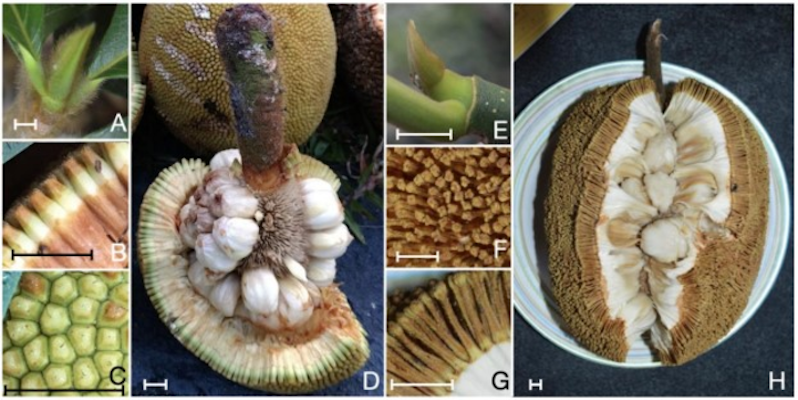Over 200 years ago, a Spanish botanist described Artocarpus odoratissimus, a species of fruit-bearing tree found in Borneo and the Philippines. The Iban people, who are indigenous to Borneo, know the tree to have two different varieties, which they call lumok and pingan, distinguished by their fruit size and shape. Despite this knowledge, Western botanists have long considered the tree as a single species, but a genetic analysis, published in the journal Current Biology, confirms the Iban people were right all along.
To determine the correct taxonomy of the tree, which is in the same genus as the trees that produce the meaty jackfruit, scientists took DNA samples from trees in Malaysian Borneo and from historical herbarium specimens. They employed phylogenetic analyses and DNA microsatellites to show that while lumok and pingan are closely related, they are genetically distinct species. The scientists recommend that the trees be renamed to reflect this and suggest that it’s time to consider incorporating Indigenous names into taxonomic research.
“While the scientific endeavor has long benefitted from Indigenous knowledge, it has usually not engaged with it on equal footing,” write the authors, which include Malaysian scientists and Iban field botanists, led by Elliot M. Gardner (@elliotmgardner), a botanist at Florida International University. “While Linnaean taxonomy offers a broad framework for global comparisons, it may lack the detailed local insights possessed by Indigenous peoples.”
“Time is of the essence, because just as biodiversity is under threat of climate change, Indigenous knowledge—itself protected under Article 8(j) of the Convention on Biological Diversity—is threatened by societal change,” Gardner and colleagues say.
Read the paper: Current Biology
Article source: Cell Press via Eurekalert
Image: The image shows a lumok pingan fruit (left) and a lumok amat fruit (left). Credit: Gardener et al./Current Biology






